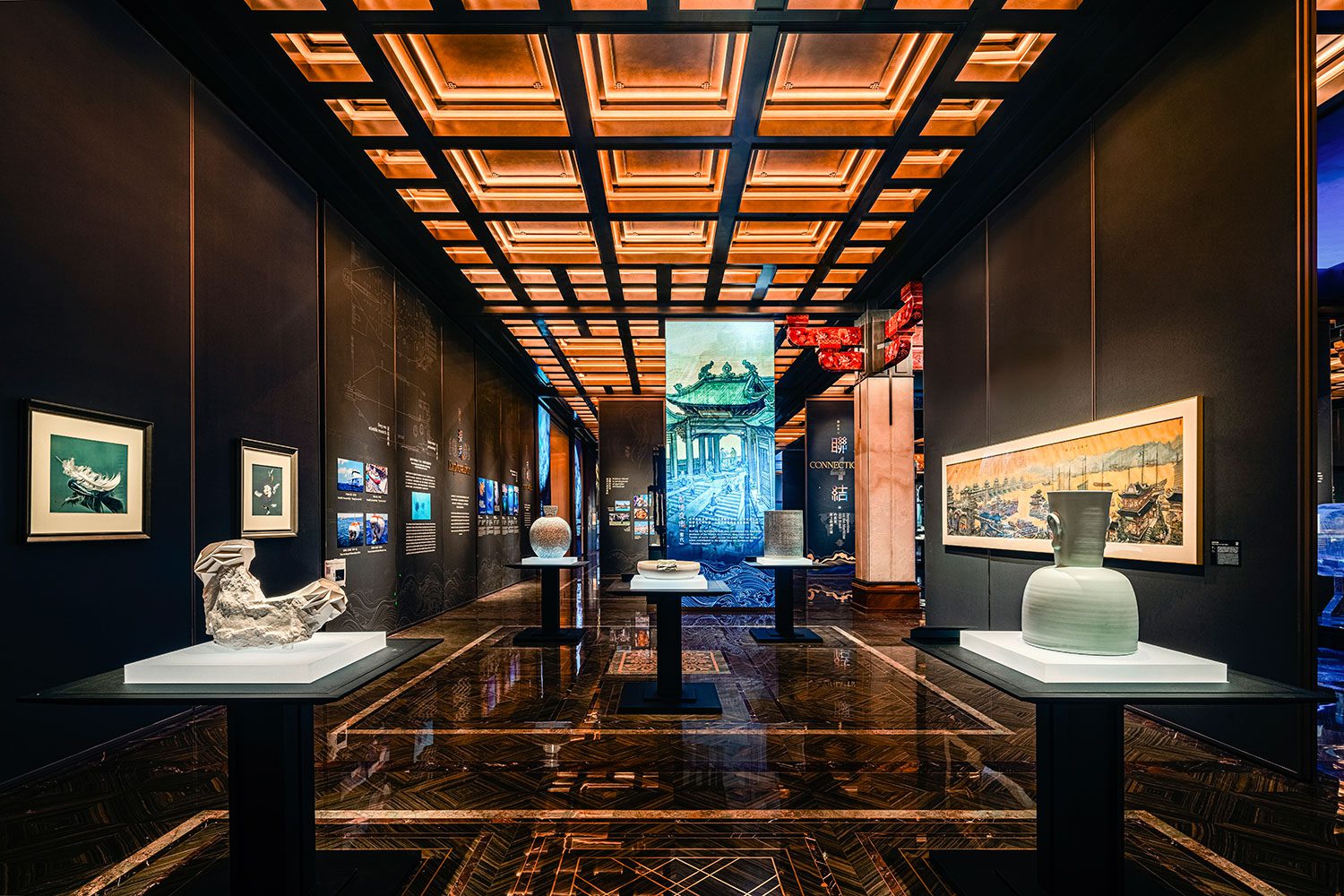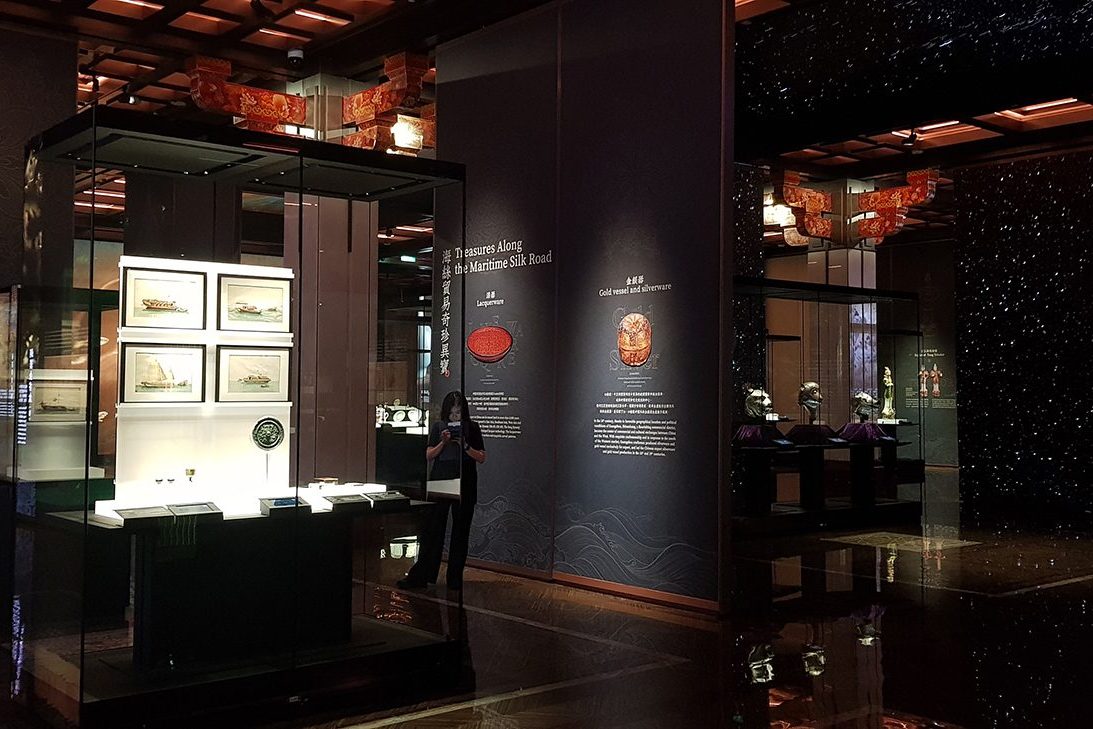THE INAUGURAL EXHIBITION THAT LIT UP THE BRAND-NEW POLY MGM MUSEUM IN MGM MACAU TOLD THE STORY OF THE ‘MARITIME SILK ROAD’ THROUGH 228 ARTIFACTS AND ARTWORKS IN 184 SETS
TEXT: NATHATAI TANGCHADAKORN
PHOTO COURTESY OF POLY MGM MUSEUM EXCEPT AS NOTED
(For Thai, press here)
‘Maritime Silk Road’ is the inaugural exhibition lighting up the brand-new POLY MGM MUSEUM in Macau, which opened its doors to the public on November 2 under the collaboration of Poly Culture and MGM. The show is a massive undertaking, brought to life through partnerships with nearly 20 national museums and premier cultural institutions from across China. Together, they’ve contributed 228 artifacts and artworks in 184 sets to help continue the storied narrative of the ancient Silk Road, the legendary network that once bridged countless nations across continents.


Many are familiar with the Silk Road as an overland trade route connecting the Western and Eastern worlds, peaking in prosperity thanks to famous Chinese exports such as silk. Although, as the exhibition deftly reminds us, the Silk Road included maritime routes too—routes where ships laden with goods sailed through numerous port cities. Dubbed the Maritime Silk Road, this aquatic artery wound through the Malay Peninsula, the Indian Ocean, the Arabian Sea, and the Mediterranean Sea. Rich in cultural diversity and differing significantly from its landlocked counterpart, this maritime path placed a spotlight on multicultural exchange. The focus on cultural interplay feels especially apt within the walls of the newly opened POLY MGM MUSEUM, nestled in Macau’s historically multicultural port setting.

The exhibition’s narrative unfolds across four distinct chapters. The first chapter, ‘Monsoon,’ invites visitors to delve into the ancient connections between humans and the ocean. This foundational segment examines how seafaring began not just as a practical endeavor but as one deeply rooted in belief and reverence for sacred entities. Across various regions, maritime myths abound, each featuring its own version of a ‘god of navigation’ or ‘god of the sea.’ Over time, these mythic beginnings gave way to more systematic navigation, propelled by the development of knowledge and technology. Moving into the second chapter, ‘Cultural Origin,’ the exhibition shifts its focus to the historical tapestry of the Maritime Silk Road. This section brings together an array of ancient artifacts salvaged from beneath the waves, illustrating the vibrant exchange of goods, ideas, and culture that took place among different civilizations. Among the standout pieces are Chinese porcelain vessels dating from the Han through the Song Dynasties—significantly different from the blue-and-white porcelain that most of us might imagine. These artifacts highlight how cultural elements and goods were traded along these routes. Adding an interesting modern twist, the glass display cases are interactive; visitors can rotate 3D models of the artifacts.

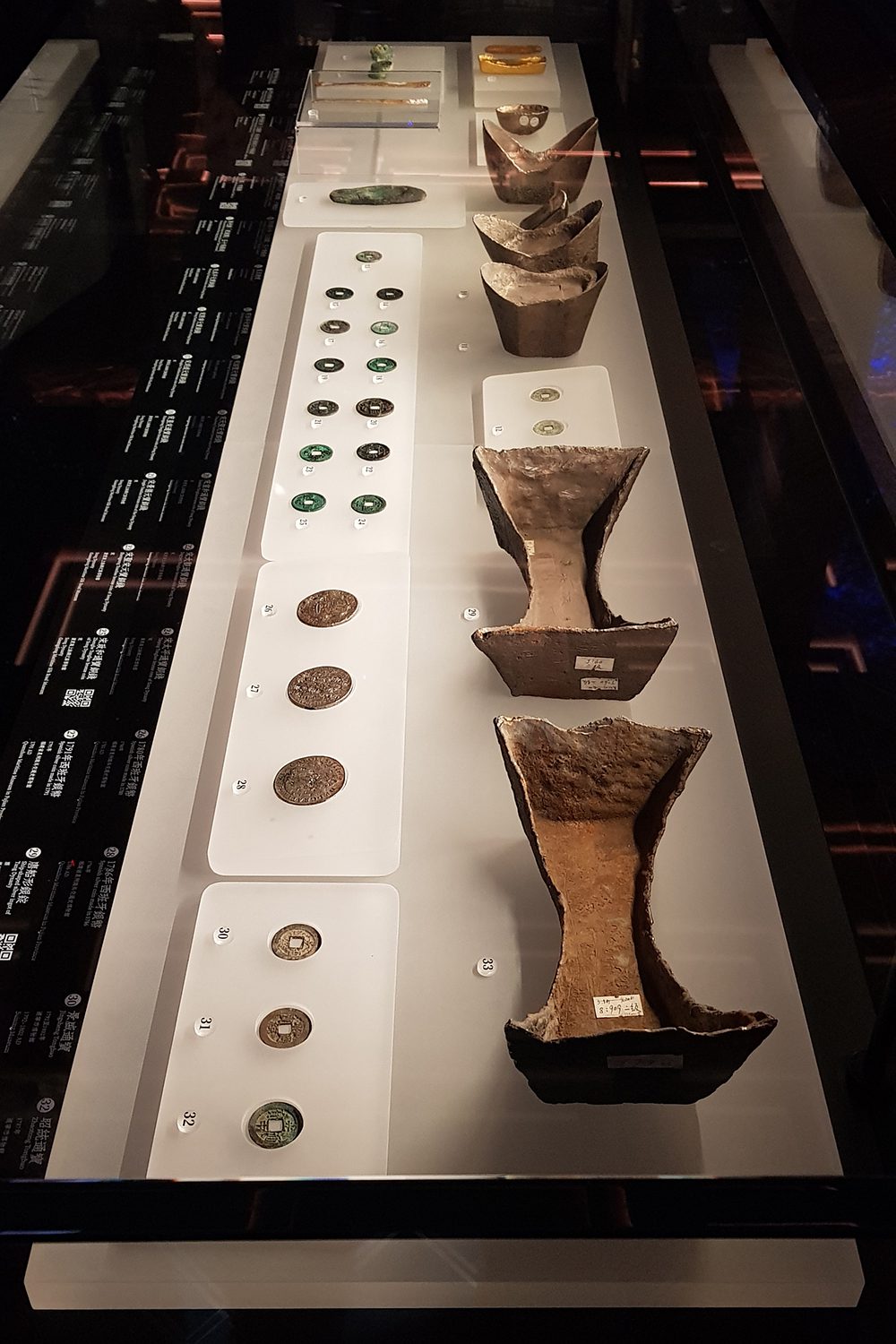
Photo: Nathatai Tangchadakorn
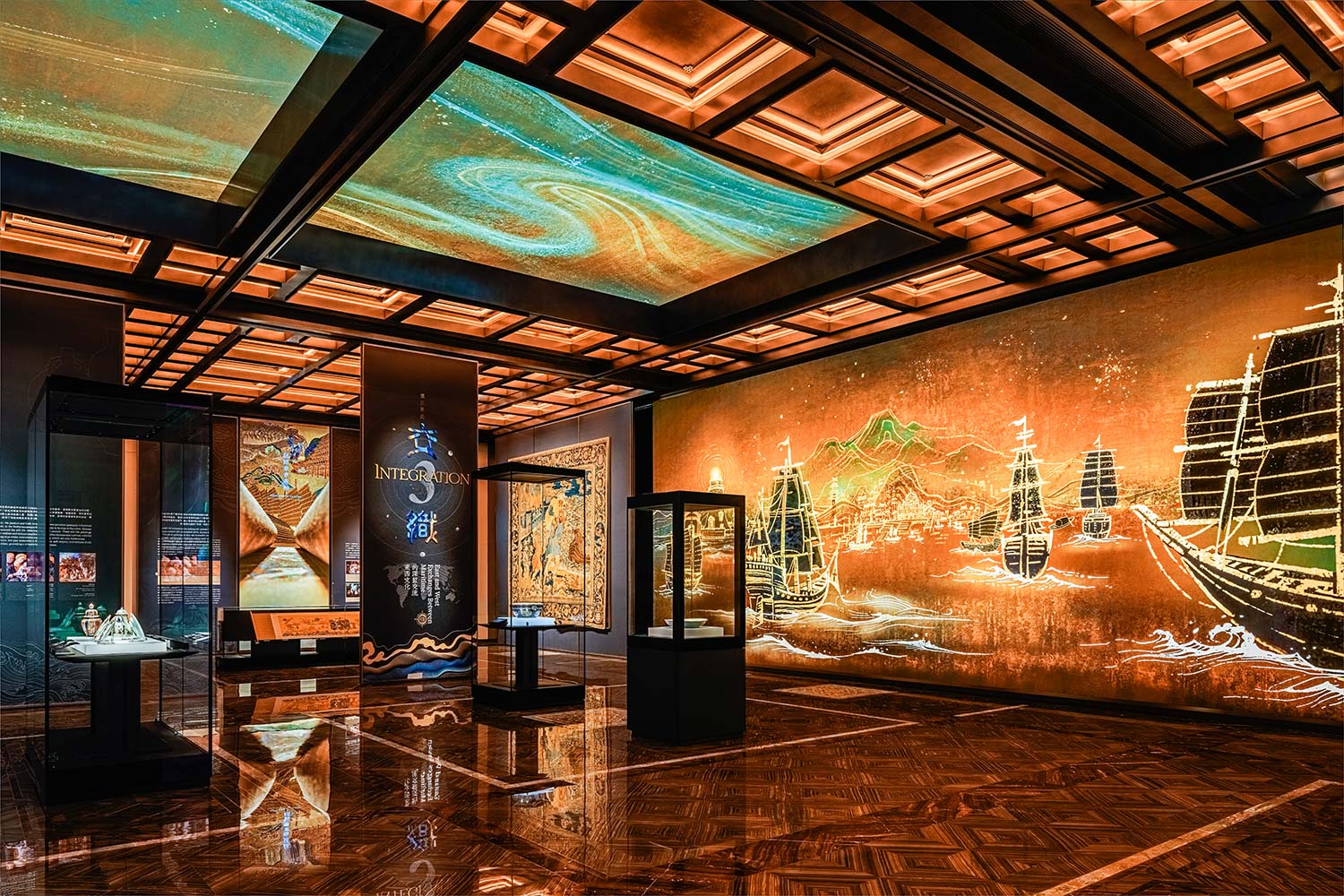

What sets this exhibition apart is its commitment not only to showcasing the past but also to drawing connections to the future. The final chapter, ‘Connections,’ employs a range of contemporary media—photography, paintings, and installations. Visitors can experience ancient artifacts presented through cutting-edge technology, transforming historical objects into immersive encounters. Additionally, modern artworks created using adapted traditional techniques are featured. This concluding chapter leaves visitors with a sense of anticipation for what lies ahead, celebrating both human innovation and ability.

Photo: Nathatai Tangchadakorn
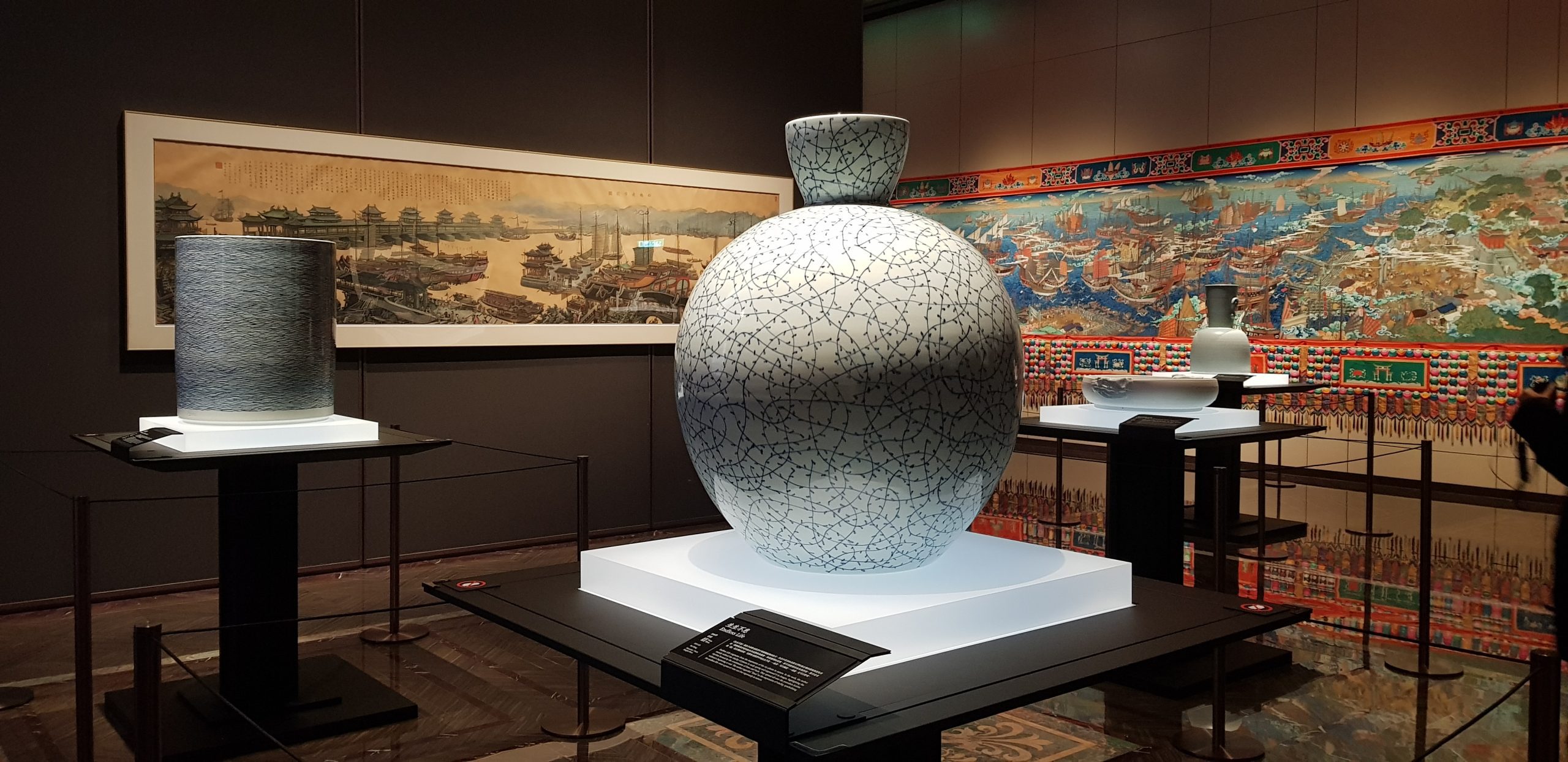
Photo: Nathatai Tangchadakorn
Although the exhibition is clearly divided into four chronologically themed chapters, there is no requirement for visitors to follow a strict sequence or move through separate rooms. The POLY MGM MUSEUM’s layout encourages free exploration of each section. The space is thoughtfully partitioned, allowing viewers to catch glimpses of exhibits from various angles and areas. For those interested in following the narrative of each chapter in sequence, it is straightforward to proceed along the guided path. Alternatively, a more leisurely approach can be taken by wandering left and right, drawn to whichever display happens to captivate attention.

The ‘Maritime Silk Road’ exhibition explores a web of interconnected themes: bridging Eastern and Western perspectives, blending tangible art objects with intangible cultural beliefs, contrasting ancient artifacts with contemporary technology, and juxtaposing historical insights alongside forward-looking speculation. Remarkably, all these elements flow together naturally within the confines of the POLY MGM MUSEUM. The building itself becomes part of the experience, incorporating traditional Chinese architectural elements that envelop visitors and contribute to the immersive environment.
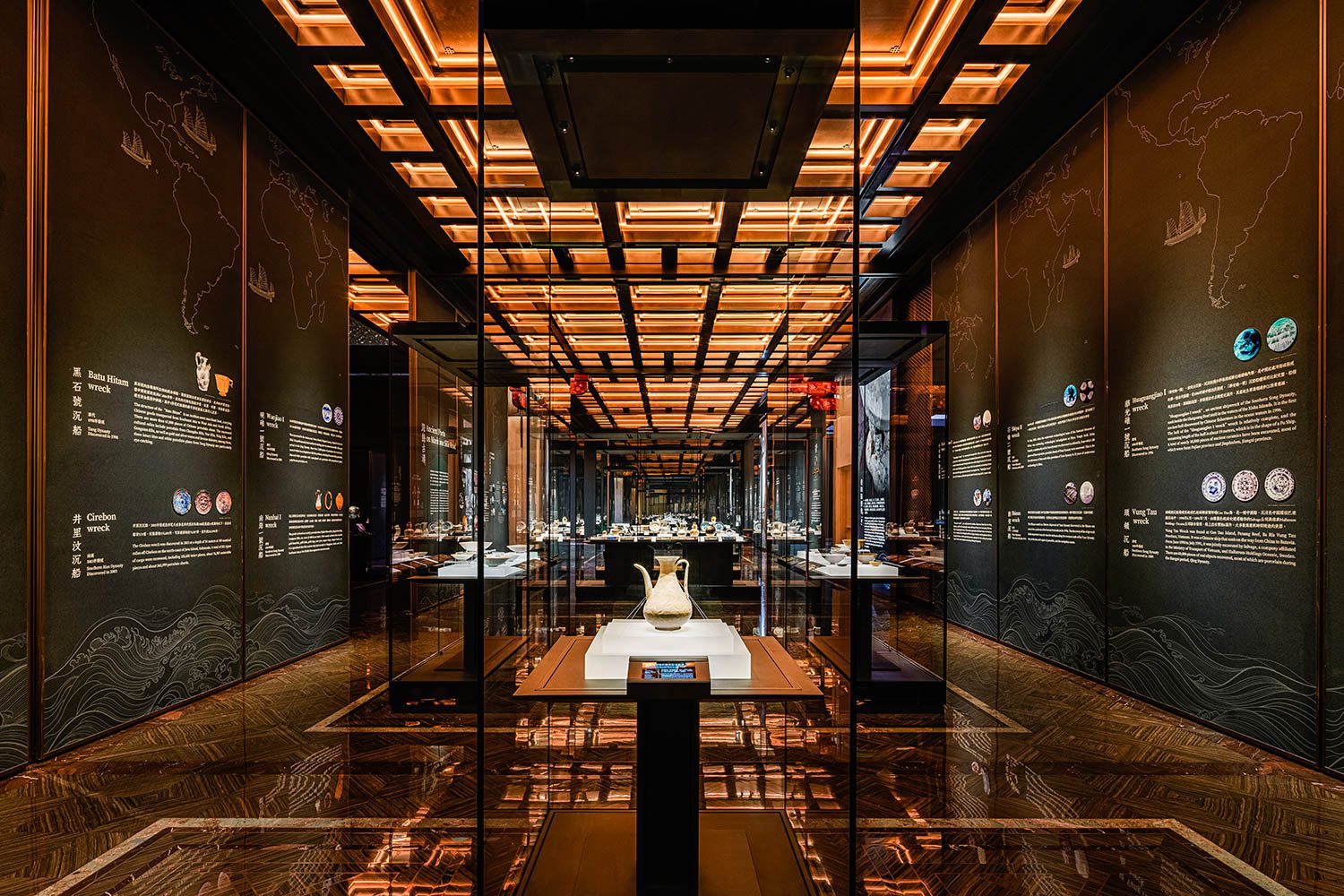
‘Maritime Silk Road’ is currently on display at the POLY MGM MUSEUM located within the MGM MACAU hotel, with the exhibition running until September 2025. Admission is free of charge, and advance reservations can be made online at museum.mgm.mo
museum.mgm.mo

